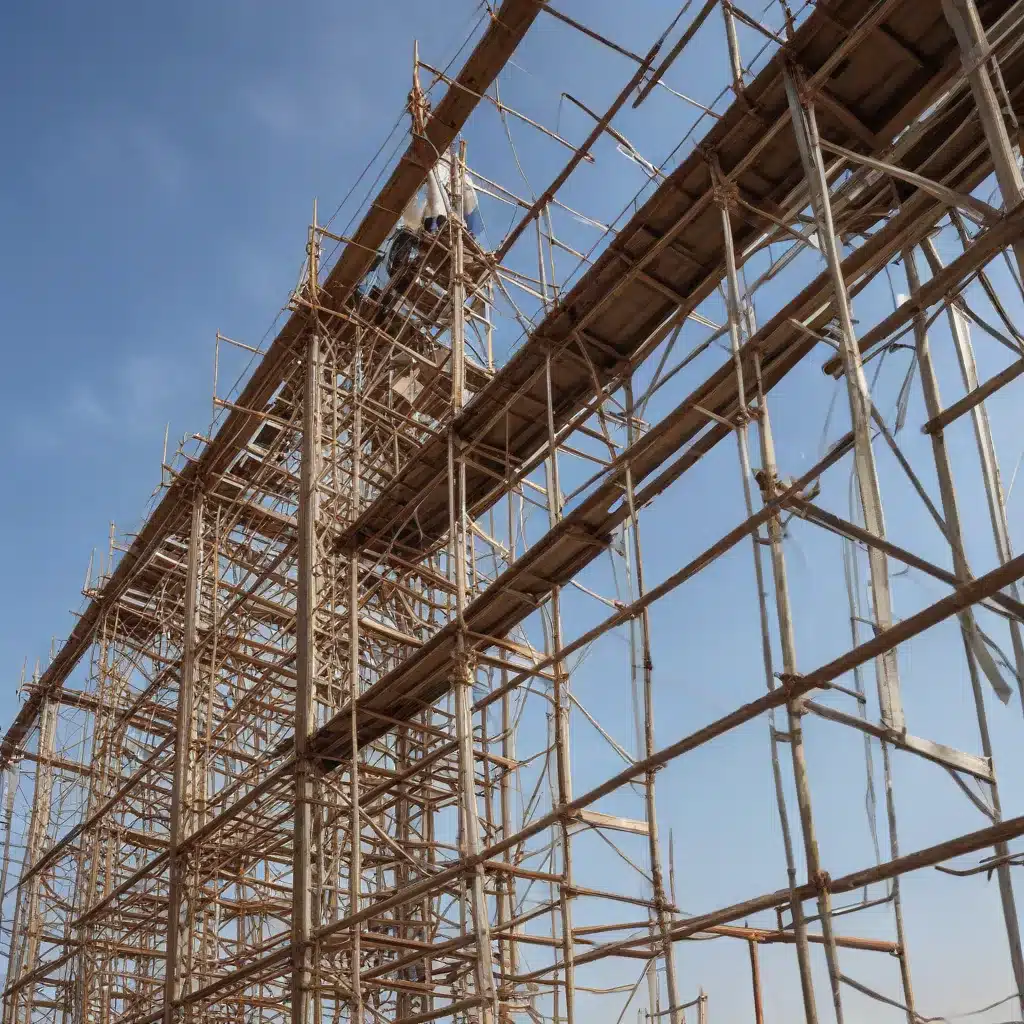
Navigating the UAE’s Regulatory Landscape
As the construction industry in the United Arab Emirates (UAE) continues to thrive, the importance of adhering to robust scaffolding safety regulations cannot be overstated. The UAE has implemented a comprehensive framework of laws and guidelines to ensure the well-being of construction workers, the public, and the integrity of building projects.
Businesses operating in the UAE’s construction sector must stay vigilant in understanding and complying with these regulations. Failure to do so can result in costly penalties, project delays, and, more importantly, put lives at risk. In this article, we will delve into the UAE’s scaffolding safety regulations, explore best practices, and discuss cost-effective strategies to maintain compliance while enhancing overall site safety and productivity.
Scaffolding Safety Regulations in the UAE
The UAE’s scaffolding safety regulations are primarily governed by the Occupational Safety and Health (OSH) standards, which are administered by the Ministry of Human Resources and Emiratization (MOHRE). These standards are closely aligned with international best practices, such as those outlined by the International Organization for Standardization (ISO) and the British Standards Institution (BSI).
One of the key regulations that construction companies in the UAE must adhere to is the use of certified scaffolding equipment and materials. All scaffolding components, including platforms, guardrails, and access ladders, must be inspected and approved by a competent authority before being deployed on-site. UAE construction regulations mandate that companies maintain meticulous records of these inspections, which can be subject to random audits by regulatory agencies.
Additionally, the UAE has strict requirements for the training and certification of scaffolding workers. All personnel involved in the erection, dismantling, and use of scaffolding must undergo comprehensive safety training and obtain the necessary certifications. These certifications, which are typically valid for a period of two years, ensure that workers are equipped with the knowledge and skills to handle scaffolding systems safely and efficiently.
Innovative Scaffolding Solutions
In recent years, the UAE construction industry has witnessed the emergence of innovative scaffolding solutions that not only enhance safety but also improve productivity and cost-effectiveness. One such solution is the use of modular scaffolding systems, which feature standardized components that can be easily assembled and disassembled.
Modular scaffolding systems offer several advantages over traditional scaffolding methods. They are typically faster to install, require fewer specialized tools, and can be reused across multiple projects, thereby reducing material waste and lowering overall costs. These systems also often incorporate advanced safety features, such as integrated fall prevention mechanisms and specialized access platforms, further enhancing site safety.
Another innovative approach gaining traction in the UAE is the use of lightweight, aluminum-based scaffolding. Aluminum scaffolding is not only more durable and corrosion-resistant compared to traditional steel alternatives but also significantly lighter, making it easier to transport and maneuver on-site. This can lead to substantial cost savings in terms of both material handling and fuel consumption during transportation.
Cost Management Strategies
Compliance with scaffolding safety regulations can have a significant impact on a construction project’s overall budget. However, savvy construction companies in the UAE have developed strategies to manage these costs effectively.
One key approach is the optimization of scaffolding utilization. By carefully planning the placement and deployment of scaffolding systems, companies can minimize the amount of equipment needed, reduce the duration of scaffolding use, and avoid unnecessary rental fees. Experienced scaffolding service providers can assist in developing tailored solutions to meet the specific needs of each construction site.
Another cost-saving strategy involves the adoption of modular and lightweight scaffolding systems. As mentioned earlier, these innovative solutions not only enhance safety but also lead to substantial savings in material costs, transportation expenses, and labor requirements. Based on recent market data, the average cost of modular scaffolding systems in the UAE ranges from $15 to $25 per square meter, while traditional steel scaffolding can cost between $20 and $30 per square meter.
Additionally, construction companies can leverage bulk purchasing agreements and long-term rental contracts with scaffolding suppliers to further optimize their expenditures. By negotiating favorable terms, they can secure discounted rates on equipment and reduce the overall costs associated with scaffolding procurement and maintenance.
Ensuring Compliance and Best Practices
Maintaining compliance with scaffolding safety regulations in the UAE requires a multifaceted approach that encompasses training, inspections, and continuous improvement.
Construction companies must prioritize the training and certification of their workforce. This includes not only the workers directly involved in scaffolding erection and dismantling but also site supervisors, project managers, and safety officers. By ensuring that all personnel are well-versed in the latest safety protocols and best practices, companies can minimize the risk of accidents and enhance overall site safety.
Regular inspections and audits are crucial to maintaining compliance. Construction companies should implement comprehensive inspection schedules to assess the condition and proper installation of scaffolding systems. These inspections should be conducted by qualified professionals, such as licensed engineers or certified scaffolding inspectors, and the results should be meticulously documented.
Embracing a culture of continuous improvement is essential for construction companies in the UAE. This involves actively monitoring industry trends, staying informed about regulatory updates, and implementing innovative solutions to enhance safety and efficiency. By fostering a proactive and collaborative environment, construction companies can stay ahead of the curve and maintain a competitive advantage in the market.
Conclusion
Navigating the scaffolding safety regulations in the UAE requires a steadfast commitment to compliance, innovation, and cost-effective strategies. By aligning their practices with global best practices, construction companies in the UAE can safeguard their workers, protect the public, and ensure the successful delivery of their projects.
Through the adoption of advanced scaffolding solutions, comprehensive training programs, and diligent inspection processes, construction companies can not only meet the regulatory requirements but also enhance overall site safety, productivity, and profitability. By embracing this holistic approach, the UAE’s construction industry can continue to thrive, delivering world-class infrastructure and securing its position as a global leader in the built environment.
